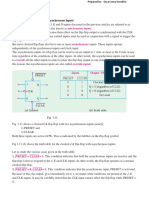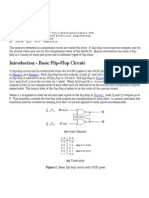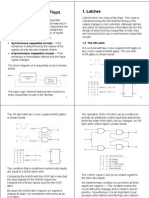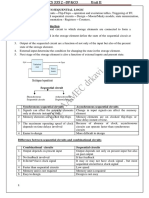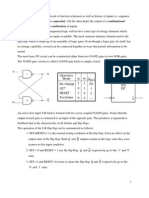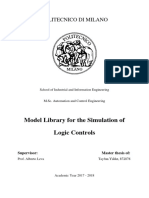0% found this document useful (0 votes)
6 views10 pagesLecture 25
The document discusses various types of flip-flops, focusing on asynchronous preset and clear inputs, specifically in J-K and D flip-flops. It explains the operation of master-slave flip-flops, their characteristics, and performance metrics such as propagation delay, set-up time, hold time, maximum clock frequency, pulse width, and power dissipation. Additionally, it introduces the concept of One-Shot mono-stable multi-vibrators and their triggering mechanisms.
Uploaded by
jacobbrandt24Copyright
© © All Rights Reserved
We take content rights seriously. If you suspect this is your content, claim it here.
Available Formats
Download as PDF, TXT or read online on Scribd
0% found this document useful (0 votes)
6 views10 pagesLecture 25
The document discusses various types of flip-flops, focusing on asynchronous preset and clear inputs, specifically in J-K and D flip-flops. It explains the operation of master-slave flip-flops, their characteristics, and performance metrics such as propagation delay, set-up time, hold time, maximum clock frequency, pulse width, and power dissipation. Additionally, it introduces the concept of One-Shot mono-stable multi-vibrators and their triggering mechanisms.
Uploaded by
jacobbrandt24Copyright
© © All Rights Reserved
We take content rights seriously. If you suspect this is your content, claim it here.
Available Formats
Download as PDF, TXT or read online on Scribd
/ 10












